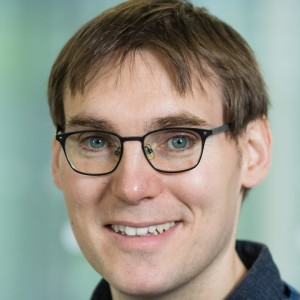
Classical simulation of quantum circuits using a multiqubit Bloch vector representation of density matrices
Q. S. Huang, C. B. Mendl
Physical Review A 105 (2), 22409 (2022).
"In the Bloch sphere picture, one finds the coefficients for expanding a single-qubit density operator in terms of the identity and Pauli matrices. A generalization to n qubits via tensor products represents a density operator by a real vector of length 4n, conceptually similar to a state vector. Here, we study this approach for the purpose of quantum circuit simulation, including noise processes. The tensor structure leads to computationally efficient algorithms for applying circuit gates and performing few-qubit quantum operations. In view of variational circuit optimization, we study ""backpropagation"" through a quantum circuit and gradient computation based on this representation, and generalize our analysis to the Lindblad equation for modeling the (nonunitary) time evolution of a density operator."

High-low pressure domain wall for the classical Toda lattice
C. Mendl, H. Spohn
Scipost Physics Core 5 (1), 2 (2022).
We study the classical Toda lattice with domain wall initial conditions, for which left and right half lattice are in thermal equilibrium but with distinct parameters of pressure, mean velocity, and temperature. In the hydrodynamic regime the respective space-time profiles scale ballisticly. The particular case of interest is a jump from low to high pressure at uniform temperature and zero mean velocity. Thereby the scaling function for the average stretch (also free volume) is forced to change sign. By direct inspection, the hydrodynamic equations for the Toda lattice seem to be singular at zero stretch. In our contribution we report on numerical solutions and convincingly establish that nevertheless the self-similar solution exhibits smooth behavior.

Quantum Algorithms for Solving Ordinary Differential Equations via Classical Integration Methods
B. Zanger, C.B. Mendl, M. Schulz, M. Schreiber
Quantum 5, 502 (2021).
Identifying computational tasks suitable for (future) quantum computers is an active field of research. Here we explore utilizing quantum computers for the purpose of solving differential equations. We consider two approaches: (i) basis encoding and fixed-point arithmetic on a digital quantum computer, and (ii) representing and solving high-order Runge-Kutta methods as optimization problems on quantum annealers. As realizations applied to two-dimensional linear ordinary differential equations, we devise and simulate corresponding digital quantum circuits, and implement and run a 6th order Gauss-Legendre collocation method on a D-Wave 2000Q system, showing good agreement with the reference solution. We find that the quantum annealing approach exhibits the largest potential for high-order implicit integration methods. As promising future scenario, the digital arithmetic method could be employed as an "oracle" within quantum search algorithms for inverse problems.

Efficient Numerical Evaluation of Thermodynamic Quantities on Infinite (Semi-)classical Chains
C.B. Mendl, F. Bornemann
Journal of Statistical Physics 182, 57 (2021).
This work presents an efficient numerical method to evaluate the free energy density and associated thermodynamic quantities of (quasi) one-dimensional classical systems, by combining the transfer operator approach with a numerical discretization of integral kernels using quadrature rules. For analytic kernels, the technique exhibits exponential convergence in the number of quadrature points. As demonstration, we apply the method to a classical particle chain, to the semiclassical nonlinear Schrödinger (NLS) equation and to a classical system on a cylindrical lattice. A comparison with molecular dynamics simulations performed for the NLS model shows very good agreement.

Coherent terahertz radiation from a nonlinear oscillator of viscous electrons
C.B. Mendl, M. Polini, A. Lucas
Applied Physics Letters 118, 013105 (2021).
Compressible electron flow through a narrow cavity is theoretically unstable, and the oscillations occurring during the instability have been proposed as a method of generating terahertz radiation. We numerically demonstrate that the end point of this instability is a nonlinear hydrodynamic oscillator, consisting of an alternating shock wave and rarefaction-like relaxation flowing back and forth in the device. This qualitative physics is robust to cavity inhomogeneity and changes in the equation of state of the fluid. We discuss the frequency and amplitude dependence of the emitted radiation on physical parameters (viscosity, momentum relaxation rate, and bias current) beyond linear response theory, providing clear predictions for future experiments.

NetKet: A machine learning toolkit for many-body quantum systems
G. Carleo, K. Choo, D. Hofmann, J. E. T. Smith, T. Westerhout, F. Alet, E. J. Davis, S. Efthymiou, I. Glasser, S. H. Lin, M. Mauri, G. Mazzola, C. B. Mendl, E. van Nieuwenburg, O. O'Reilly, H. Theveniaut, G. Torlai, F. Vicentini, A. Wietek
Softwarex 10, 100311 (2019).
We introduce NetKet, a comprehensive open source framework for the study of many-body quantum systems using machine learning techniques. The framework is built around a general and flexible implementation of neural-network quantum states, which are used as a variational ansatz for quantum wavefunctions. NetKet provides algorithms for several key tasks in quantum many-body physics and quantum technology, namely quantum state tomography, supervised learning from wavefunction data, and ground state searches for a wide range of customizable lattice models. Our aim is to provide a common platform for open research and to stimulate the collaborative development of computational methods at the interface of machine learning and many-body physics. (C) 2019 The Authors. Published by Elsevier B.V.
